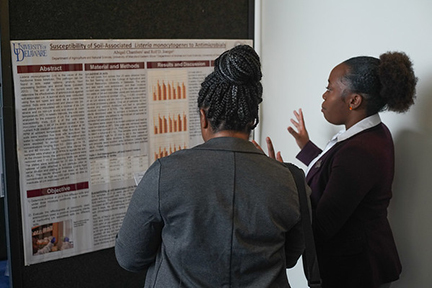By Chardae Heim
Diversity in leadership is often a key asset to any company or industry, and while agriculture may lag others in diversity at the top, the industry is poised to make great strides and more closely reflect the demographics of the world it feeds. Just as a farmer understands the value of diversifying his or her crops, the industry as a whole is benefitting from efforts to include women and minorities in positions of management and ownership.
According to the 2017 Census of Agriculture, while the total number of male farmers actually declined from the 2012 data, the number of female producers jumped nearly 27 percent, from 970,000 to 1.23 million. Women now represent 36 percent of all U.S. farmers, and the total market value of agricultural products sold by farms with women producers was $148 billion in 2017.
Just as we are seeing more women in agriculture, the industry is also seeing an uptick in minority representation. While the total number of U.S. producers rose by 6.9 percent between 2012 and 2017, the total number of minority farmers—including Hispanic, American Indian, African American and Asian—increased by 9.6 percent during the same time span. The total market value represented by these minority farmers was $35 billion in 2017, up nearly 29 percent from 2012.
Though significant progress has been made in enhancing diversity in agriculture, minorities are still underrepresented in farming. Of the 3.4 million farmers nationwide, just 240,000—or roughly 7 percent—are minorities, a ratio that has remained relatively flat in recent years. These persistently-low numbers beg the question: Do minorities face barriers to entry that make careers in agriculture inaccessible? It is significant to note that minorities have contributed to many of agriculture’s most utilized inventions and practices, such as Henry Blair, who patented the corn planter, and George Washington Carver, who developed his own crop rotation method, which increased the soil’s productive capacity. Another notable minority agriculturalist is biochemist Dr. Evangelina Villegas, who dedicated her research to improving the nutritional content of maize. Along with her research partner, she developed quality protein maize, which increased the digestible protein in corn, improving the nutritional standing of millions of underfed people around the world.
To encourage diversity in agriculture, and to help women and minorities overcome the barriers to entry, numerous non-profit organizations and government programs have emerged, including the National Society for Minorities in Agriculture, Natural Resources, and Related Sciences (MANRRS). In 1986, a group of agriculture and natural resources students and faculty from Michigan State University and Pennsylvania State University created MANRRS to provide underserved and under-resourced individuals in the industry a reliable network of like-minded professionals. Still in operation today, MANRRS provides their members with valuable resources, such as leadership development, educational opportunities, job readiness training and internship placement and permanent employment, with a special emphasis on agriculture, natural resources and related sciences.
Another longtime advocate for diversity and inclusion within agriculture is the United States Department of Agriculture Farm Service Agency (FSA). In order to better serve traditionally disadvantaged communities of farmers and ranchers, the FSA has developed a number of initiatives like the operating and ownership microloan programs. Farmers are awarded these microloans to purchase farm land, expand an existing farm, implement soil and water conservation practices, as well as to cover start-up expenses. Nearly 80 percent of these loans were allocated to underserved farmers, which also included beginning farmers and military veterans. In addition to these microloans, the FSA also aims to provide a portion of all loan funds to historically disadvantaged farmers and ranchers.
The National Sustainable Agriculture Coalition (NSAC) is a union of associations advocating for federal policy reform to advance the sustainability of agriculture, food systems, natural resources, and rural communities. While the NSAC has worked on programs to advance agriculture as a whole, they have developed and championed initiatives supporting minorities and socially disadvantaged farmers and ranchers. The Outreach and Assistance for Socially Disadvantaged and Veteran Farmers and Ranchers Program provides grants to socially disadvantaged farmers, including African Americans, American Indians, Asian Americans and Hispanics. Administered by USDA (and financially supported by NSAC), this program seeks to overcome historic discrimination by providing funding for minority farmers to own and operate farms, as well as providing them with assistance in farm management, financial management and application and bidding procedures.
Diversity in the workplace has proven to yield significant value to society as a whole, and an emphasis on greater inclusion in agriculture will result in a stronger, more creative and innovative industry in the future. Achieving a more complete inclusion in agriculture will not happen overnight, but as the recent growth in minority farmers demonstrates, we can expect the trend to accelerate. Indeed, with the support of organizations like MANRRS, USDA and NSAC, diversity is more attainable than ever.



